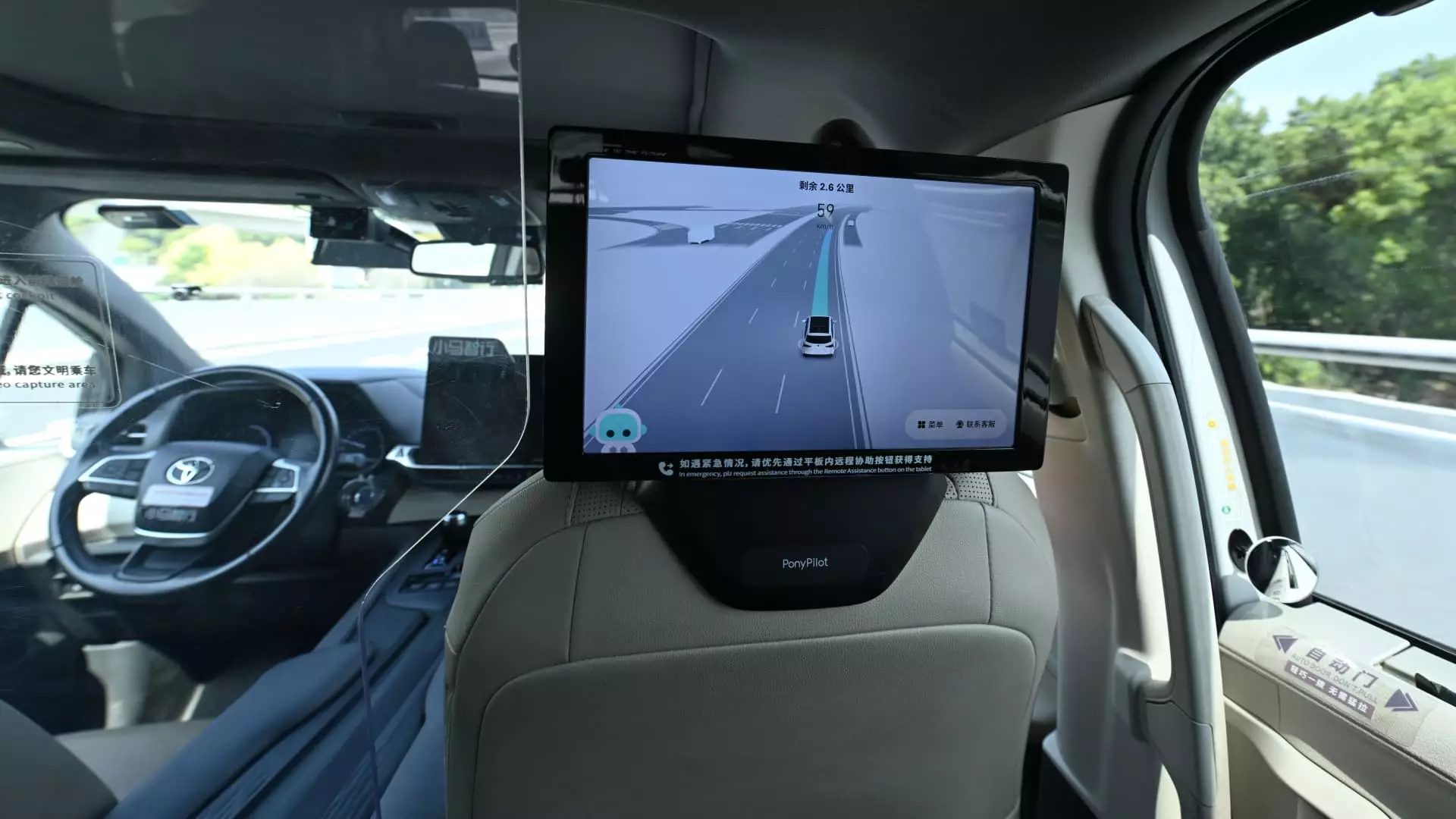In recent years, the emergence of autonomous taxis—commonly known as robotaxis—has shifted from a futuristic concept to an imminent reality transforming urban landscapes. While the tech enthusiasts herald this development as a harbinger of efficiency and innovation, it’s crucial to scrutinize the broader implications. This technological wave, driven predominantly by giants like Waymo, Baidu, and Pony AI, presents not just an advance but a challenge to longstanding societal paradigms and economic structures.
At face value, robotaxis promise increased convenience, lower cost, and improved safety. Yet, beneath this enticing veneer lurk complex concerns about job displacement, regulatory overreach, and economic favoritism. As these vehicles become more widespread, they threaten to redefine urban mobility at a pace that leaves traditional transportation industries scrambling to adapt. The question is not merely whether robotaxis are inevitable, but whether society is prepared for their disruptive potential or if we are blindly rushing towards an unexamined future.
Global Competition and Strategic Deployments
The push for autonomous taxis isn’t confined within national borders; it’s a fierce geopolitical competition cloaked in technological innovation. American firms like Waymo are expanding in the United States, deploying over 1,500 robotaxis in key cities such as San Francisco and Austin, conducting hundreds of thousands of paid trips weekly. Meanwhile, Chinese companies—particularly Pony AI, Baidu, and WeRide—are rapidly not only scaling domestically but aggressively pushing into global markets, including Europe, the Middle East, and parts of Southeast Asia.
This international race is strategic as much as technological. China, aiming to dominate the autonomous vehicle industry, has made significant regulatory strides—permitting robotaxis to charge fares in Beijing, Shanghai, and other major cities—while Chinese startups seek to leverage cost advantages and technological breakthroughs to outpace Western competitors. The cost disparity between these companies’ vehicles—ranging from Pony AI’s $37,000 units to Waymo’s $200,000—illustrates a crucial competitive advantage rooted in innovation and manufacturing efficiencies.
What emerges from this competition is a fractured, uneven landscape where countries with more agile regulatory environments and lower operational costs outperform those constrained by legacy industries and bureaucratic inertia. It’s a race for preeminence and economic influence, with the winner potentially shaping the future of urban mobility on a global scale.
Safety and Profitability—Promises versus Realities
Proponents tout autonomous taxis as the safest form of transportation, minimizing human error—the leading cause of accidents. However, safety remains a contentious issue. Despite claims from companies like Pony AI that their latest vehicles have significantly reduced costs and improved safety features, real-world deployment exposes persistent challenges. Incidents, software glitches, and the difficulty of navigating unpredictable human behavior continue to test these systems’ reliability.
Moreover, profitability remains elusive for many operators. While Baidu and Pony AI hint at near-breakeven points, the road to sustainable business models is fraught with uncertainties. The economics of deploying thousands of low-cost units capable of 15 or more daily trips per vehicle hinge critically on regulatory acceptance, public trust, and mass adoption. The troubling reality is that many companies are still in the trial-and-error phase, pouring billions into R&D without guaranteed immediate returns.
Yet, the economic narrative persists—by slashing vehicle costs and optimizing operational efficiencies, Chinese firms aim to achieve profitability by the mid-2020s, threatening established automakers and ride-hailing services alike. This could, paradoxically, accelerate societal upheaval by making traditional driver jobs obsolete at an unprecedented scale, raising urgent questions about worker rights and social safety nets.
Strategic Implications and the Future of Mobility
The international expansion of robotaxis signifies a broader strategic move—one that could reshape global power dynamics. Western companies like Waymo are cautiously expanding into markets like Japan, while Chinese firms leverage their government-backed backing and technological edge to penetrate emerging markets even before regulatory frameworks are firmly in place.
The stakes involve more than just transportation; they encompass economic sovereignty and technological leadership. The global automotive industry is on the brink of a profound transformation, akin to the shift from horses to automobiles over a century ago. Those who lead in autonomous mobility will likely command not only markets but also influence over urban development, infrastructure, and even geopolitical allegiances.
Yet, amidst this acceleration, significant hurdles remain. Regulatory uncertainties, ethical concerns, and societal acceptance are often glossed over in the rush for market dominance. The real question posed by this technological revolution is whether societies will harness the benefits without sacrificing control and stability or succumb to the pitfalls of unchecked innovation—potentially leading to increased inequality, marginalization, and decentralization of traditional job opportunities.
As robotaxis carve their way into the fabric of modern cities, the urgent task for policymakers, industry leaders, and society at large is to critically evaluate whether this relentless march forward serves the common good. The allure of automated efficiency must be tempered with caution, ensuring that innovation does not propel us into a future defined solely by technological hegemony and social disparity.

